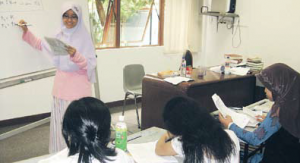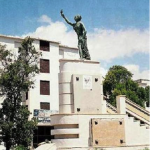A few months ago, I came across an article about how more Burmese domestic workers in Singapore were running away from exploitative conditions. The caption of the photo told me a lot about how the mainstream media in Singapore (heavily controlled by the government) viewed these domestic workers as as causing a ‘commotion.’ This reminded me of research I had previously done as part of my Master’s thesis on Indonesian domestic workers in Singapore, where I analysed how mainstream media viewed these mostly Muslim women.
The varying situations of migrant domestic workers (MDWs) in the world has been an area of great interest to me because my household has benefited from the help of Indonesian domestic workers for over 20 years. In my home and in the public discourse, I had observed different representations of MDWs. Complaints by relatives about their ‘lazy’, ‘ungrateful’ or ‘resentful’ maids mirrored the construction by the Singapore state, through its coercive policies on immigration and migrant workers, of MDWs as potential home-wreckers or naive charges.
The mainstream media in Singapore represents these workers as either helpless ‘victims’ of oppressive employers and local laws, or as exercising agency as deviant ‘criminals’ or ‘heroines’. The ‘victim’ representation focuses on reports of ‘maid abuse’ and unnatural deaths such as accidentally falling from window ledges, physical abuse from employers, murder or suicide. For example, 24-year-old Nia Wulandari fell from the third floor of a HDB apartment and broke her spine; 23-year-old Susilawati Kusnata was physically abused almost daily by her employers; 30-year-old Ruliyawati was killed by a male Bangladeshi migrant worker and found dead in a HDB rooftop water tank.
These incidents reached a peak in 2004, with 40 such deaths in that year. However, the ubiquity of government-subsidised Housing Development Board (HDB) apartments, coupled with the predominant method of hanging laundry on long bamboo poles, still causes frequent falls each year. In 2012 there were nine women who died in this way, with only a SGD5000 fine for the employer.
Then there is the ‘criminal’ representation, which is not only found in legislation, but also in media reports of MDWs who commit crimes of grievous hurt, murder, or rape. This illustrates a pathological agency– a result of mental illness or extreme stress. For example, 16-year-old Nurhayati was jailed for causing the death of her female 12-year-old disabled charge; Kumaeroh was jailed for stabbing her female seven-year-old charge; 25-year-old Etik was caught on closed circuit television hitting a two month-old baby; and 22 year-old Sundarti Supriyanto stabbed her female employer and her daughter to death.
Given these hegemonic and dichotomous representations focusing on instances of abuse and crimes, I was intrigued by the representation of these women as ‘heroines’ found in an article about MDWs who were studying for their degrees via online and distance-learning. By studying part-time while working full-time as a domestic worker, these women show their determination to improve their conditions. Having migrated for hundreds of kilometers for domestic work they find themselves under the control of their employers in Singapore, but even within these power relations they present an exceptionally high level of agency.
While the representations of migrant domestic workers as victims or criminals are still dominant in Singapore today, I hope that there will be more spaces in the future for these women to represent themselves and show alternative conceptions of migrant workers in general and domestic work in particular.













